What’s new: When emerald ash borer (EAB) was discovered in Canada in 2002, the government was concerned that the beetle would eventually spread to other trees. In 2015, it did.
Why it’s important: The emerald ash borer causes up to 100 per cent loss in ash tree stands. The insect has already killed over 100 million ash trees in North America. It attacks all 22 species of the tree in North America.
A recent study by the International Society of Arboriculture estimated the economic damages of timber loss from the pest to be close to $2 billion per year in Canada.
The borer is originally from China, where it causes little damage because of natural predators. However, the insect has few predators in North America.
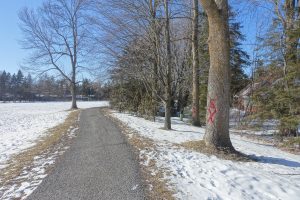
“There is concern that as ash trees die, EAB will seek alternate hosts as reported in Asia, ” says an internal government document.
The August 13, 2002, risk assessment documents were obtained under the Access to Information Act.
The documents say the “potential for alternative hosts needs to be addressed”.
The borer not only attacks ash trees in China but a species similar to pecans, known as wingnuts.
The document suggests that pecan groves in Southern Ontario could be at risk. Although that industry is small, the borer could have disastrous effects on small nut farms.
The document says elms and walnuts could also be suitable hosts as could other leafy trees. Over 30 per cent of Ontarian forests are deciduous and are potentially threatened.
In 2015, the U.S discovered that the borer had infested white fringe trees. Although ash and white fringe are in the olive family, they are a very separate species. Lilacs and jasmine are in the same family.
The white fringe tree isn’t native to Canada but it’s a popular ornamental.
Other documents obtained under the same act say the Canadian government in 2015 was awaiting the results from further testing by the U.S on what other trees could be at risk.
Since 2013, the Canadian government has been releasing parasitoid wasps through a biocontrol program with the hope that they would eradicate the borer. The wasps eat the beetle’s larva and eggs.
As of 2015, over 85,000 wasps have been released in Ontario and Quebec.
What the government says: Krista Ryalls, lead wasp scientist at Natural Resources Canada says the government “still isn’t sure” if other tree species are threatened by the borer.
While the wasps are harmless to humans, Ryalls says whether they will be effective at eradicating the borer is yet to be seen.
It could be decades before the wasps have any effect, or if at all.
“We will probably lose all the ash,” said Robert Lavallèe, an entomologist with Natural Resources Canada. Even if the wasps work, it could be too late as all the ash trees could already be dead.
What others say: “Nothing will only attack one species,” said Peter Mason, a biocontrol specialist. Most species eat more than one type of food.
The wasps also parasitize birch bronze borer, a native beetle to Canada.
What’s next: Ryall says the Canadian government will continue to “watch the situation closely”, but wouldn’t comment further.
The U.S Department of Agriculture says it’s still testing if there are other food sources for the borer, but wouldn’t comment on the results to-date.
Ryall says it’s likely the wasp program will expand over the next few years as more wasps are released.
However, Mason says that if the borer does find alternative hosts the wasps will be useless.
The wasps find the borer by following chemicals secreted by ash trees. If the borers are elsewhere, like on a white fringe tree, the wasps won’t be able to locate them.
Ryall’s says the government doesn’t know what the wasps will do if they run out of food.
Over $10 million has been spent on the biocontrol program since 2013.
*This piece is based on information gathered from documents obtained under the Access of Information Act. The documents had previously already been released by the Canadian Food Inspection Agency. The documents were helpful because they said there was concern that EAB may change to a new host. I’ve been working on an in-depth piece concerning EAB and all the sources I had already talked to, said that EAB was ash-specific. However, these documents suggest the potential for an alternative host exists and that EAB has been found infesting white fringe trees. I was able to go back to my sources and ask why they didn’t mention this before, I think it’s something they don’t want to talk about. Especially because if EAB does switch hosts, the parasitoid wasps may not be effective, meaning millions of dollars and years of research may have been for nothing.
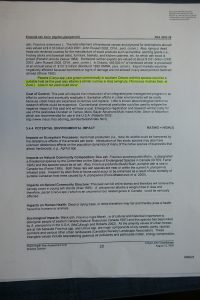
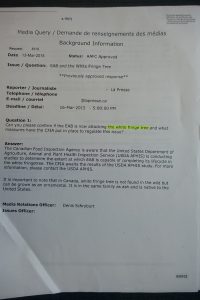
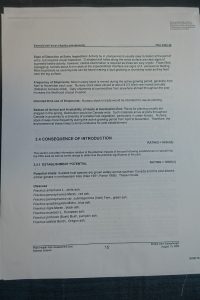
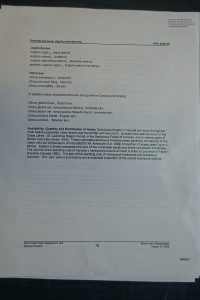
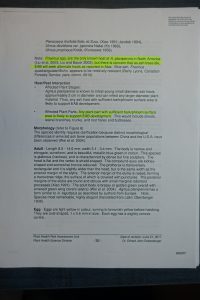
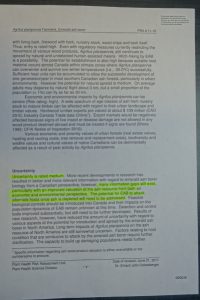

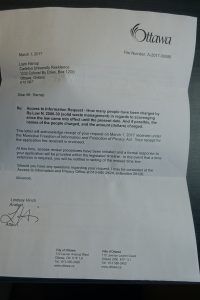
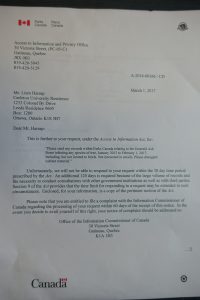
The following is a response from requesting information from the BC government:
Dear Liam Harrap:
Re: Request for Access to Records – Fee Estimate
Freedom of Information and Protection of Privacy Act (FOIPPA)
I am writing further to your request received by the Ministry of Energy and Mines. Your request is for:
Any records concerning the Northwest Transmission Line, including but not limited to briefs; Exclude emails or cabinet material. (Date Range for Record Search: From 01/01/2009 To 01/01/2011)
Section 75(1) of FOIPPA provides that we may charge a fee for certain limited costs of processing your request. However, the first three hours to search for records and any time spent reviewing and/or severing information from the records is not charged to you. A complete copy of FOIPPA is available online at: http://www.bclaws.ca/EPLibraries/bclaws_new/document/ID/freeside/96165_00
Due to the size and scope of your request, we are assessing a fee. You may wish to consider options to reduce or possibly eliminate the fee estimate, such as:
· Reducing the time period for which you have requested records, or
· Requesting records from specific staff members or program areas in the Ministry, or
· Requesting specific types of records (e.g. final versus draft, correspondence, briefing notes, reports), or
· Requesting electronic copies of the records.
If you choose to narrow your request, a revised fee estimate may be provided. I will work with you to try to find an efficient and cost effective method in which to provide records. The fee of $ 660.00 has been calculated as per the attached Fee Summary.
Due to the amount of the estimate, we will require a deposit in the amount of $330.00. Please send a cheque or money order made payable to the Minister of Finance, quote your file number and mail it to:
Attn: John Wilson
Information Access Operations
Ministry of Finance
PO Box 9569 Stn Prov Govt
Victoria BC V8W 9K1
*I’m currently writing an in-depth piece concerning the emerald ash borer. So for this article, I had contacts already and bit and pieces from previous interviews. I originally interviewed Kysta Ryalls (in February) about the effectiveness of the parasitic wasp program. I interviewed Robert Lavallèe (in February) about a program in Montreal using fungus to control the borer. I met Peter Mason (a couple weeks ago) in Ottawa, he does research on biocontrol and we talked about biocontrol legislation in Canada. I also interviewed Paul Chaloux (during reading week) with the U.S Department of Agriculture in regards to how they are fighting emerald ash borer in the U.S.
*When I got my ATIP information a week ago, I contacted Ryalls, Mason, and Chaloux (last week via the phone) again to ask a few follow-up questions concerning the worry of the borer attacking other trees. I also emailed Jason Pollard, a forester with the City of Ottawa, on whether the city plants white fringe (and the city does not).

